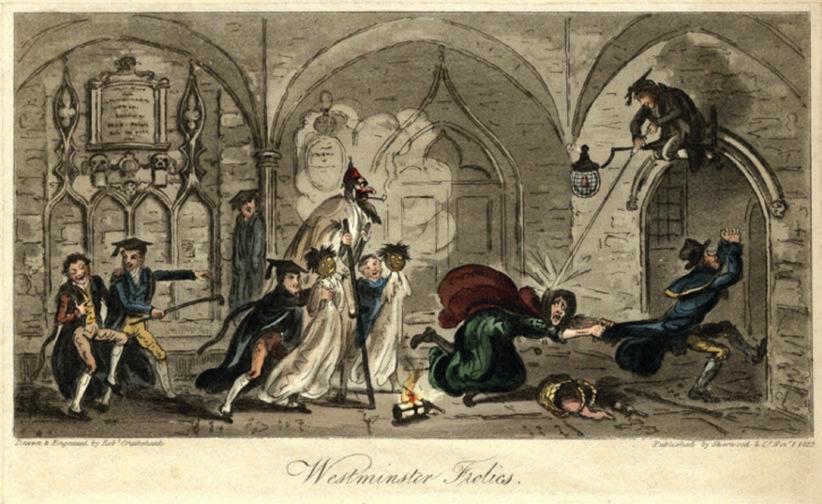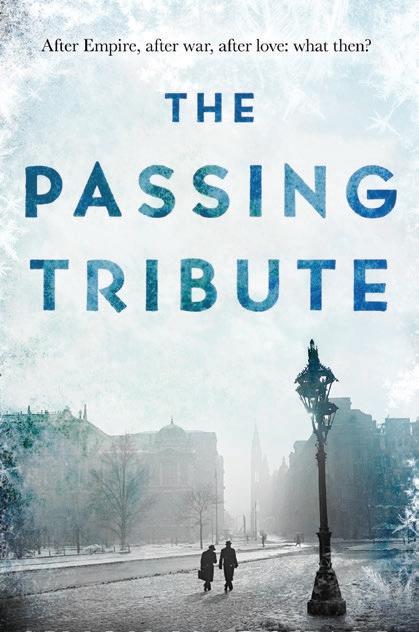
3 minute read
Westminster’s Ghosts
The two way staircase, Ashburnham House
There are a number of works of fiction that draw on ghostly apparitions in and around the Abbey, and there are many anecdotes of ghosts at large.
Advertisement

ne of the more recent was told by Lilian Carpenter, wife of Dean Edward Carpenter. One evening when she was visiting the Abbot’s Pew that overlooks the west end of the nave she saw in the twilight a solitary figure in the black habit and cowl of a Benedictine monk. He was slowly making his way east, head bowed over his breviary, clearly saying his office. She made her way back through the deanery, through Samaria into the Nave and was in time to see the monk pass under the organ screen. Quite aware now what she was witnessing, she followed the spectre into the Quire. As he moved to a stall in the Quire his form faded.
The telling detail that Lilian recorded was that within the Quire the monk was walking some eighteen inches above the black and white pavement. That pavement, originally laid at the direction of Robert Hooke and paid for by Dr Busby, had been lowered by a similar amount in 1847 when the screens to the transepts had been removed. So the monk would have been walking on a floor that had been in place before the Reformation.
Of School ghosts there are a number of stories. In particular, if we think today of the noise of the football in Yard as it rebounds from the walls of College we might reflect on the earlier game of racquets in its particular Westminster manifestation, played in either version, with wooden or wire racquets. The game took over virtually the whole of Yard in front of Rigaud’s, Grant’s, and College. The sound of a spectral racquets ball hitting the wall was said to be heard in quiet moments at the end of the Latin Play
The Play used to be held in College, which was previous a vast barn of a



Westminster Frolics © E A Smith dormitory, converted each year to house the auditorium and stage for the annual production. There are stories of a solitary Queen’s Scholar seen playing racquets in Yard on a Play night. The story goes that it is the ghost of a junior Queen’s Scholar who was pursued by seniors up onto the roof of College, where he lost his footing and fell to his death in Yard.
There are two more stories of ghosts, one reported by the poet, Robert Southey, and the other by the playwright, Frederic Reynolds. Southey encountered his ghost “at a very late hour and throwing itself upon his bed and rolling on him.” Not to be fooled by these unghostlike actions Southey seized the ghost and made “enough noise to bring up the Usher of the House, at whose appearance the ghost was discovered to be a boy in the house.”
Reynolds described his encounter: “Scarcely, however, had the deep tones of the Abbey bell, tolling the awful hours of midnight, awakened me, when I was alarmed by the loud screams of several of the younger boys. Starting up in a paroxysm of terror, I saw at the foot of the bed a horrid spectre bearing a large cross, on which was written in flaming characters, ‘Think on tomorrow.’ I gazed till stupefied by fear, I mechanically closed my eyes, and hid myself under the bedclothes. But the spectre drawing them aside, and pointing to the burning letters, thrice shook its solemn head, and then it vanished; leaving me in a doldrum of terror, which slowly, but gradually subsiding, restored me at length both my mental and corporeal faculties.
“The first I amply employed in reflections on the awful warning that so plainly prophesied the moment of my first entrance into the School would prove that of my departure from the world; and the latter, at the instigation of the former, in sobs and kicks till dawn.”
The spectre appeared to Reynolds again a few days later, but he had by this time then found refuge in the room of George Colman, who was to achieve fame as an actor. Colman “gave it so substantial a drubbing, that it gave up the ghost for ever.” ■









